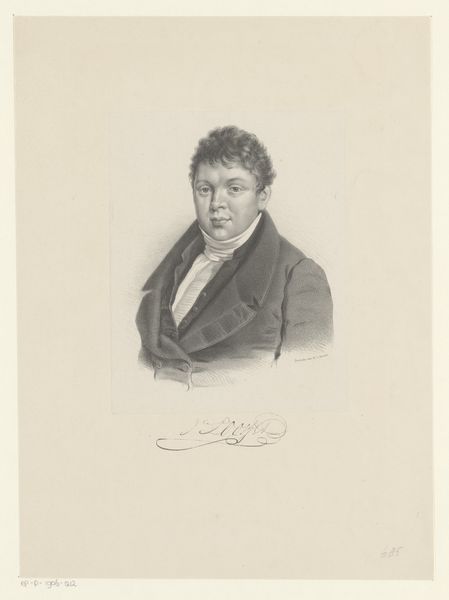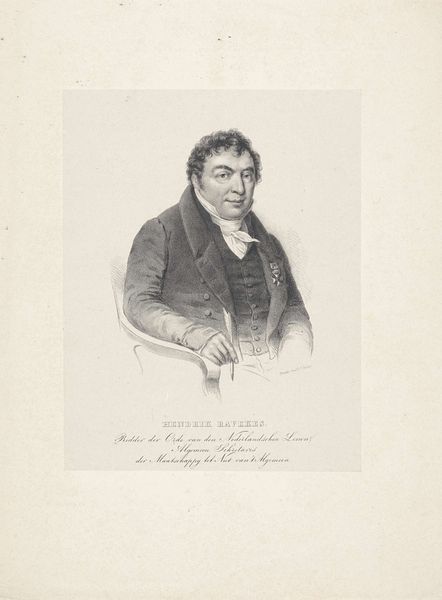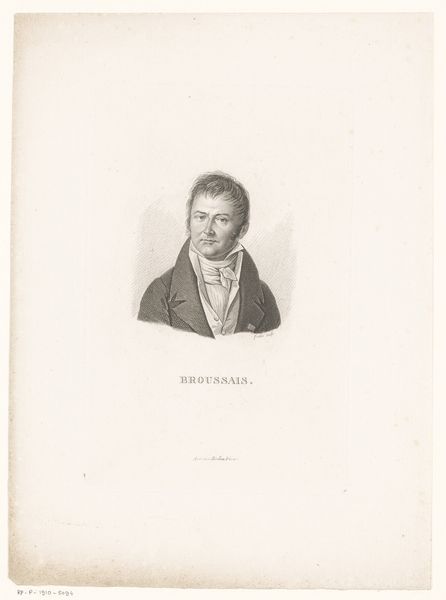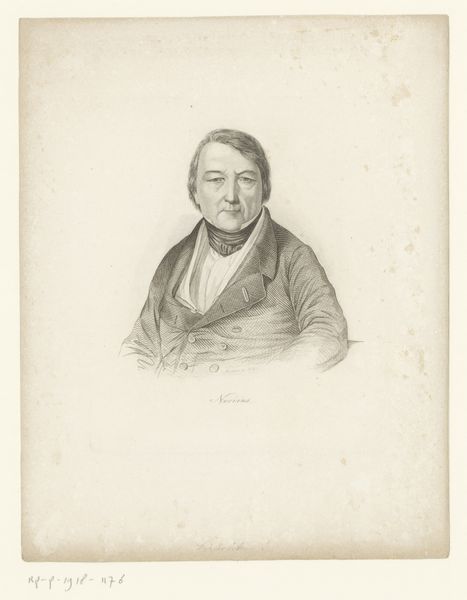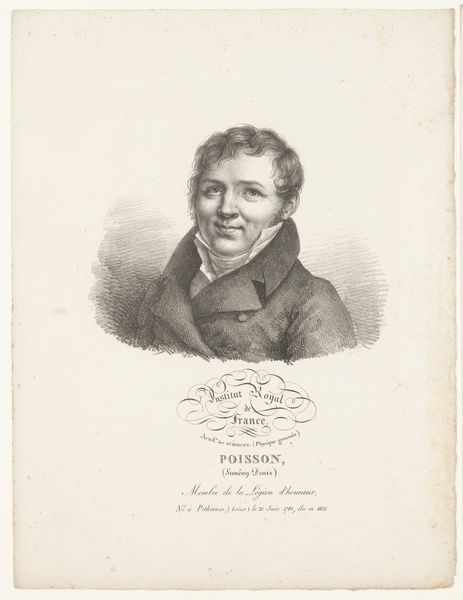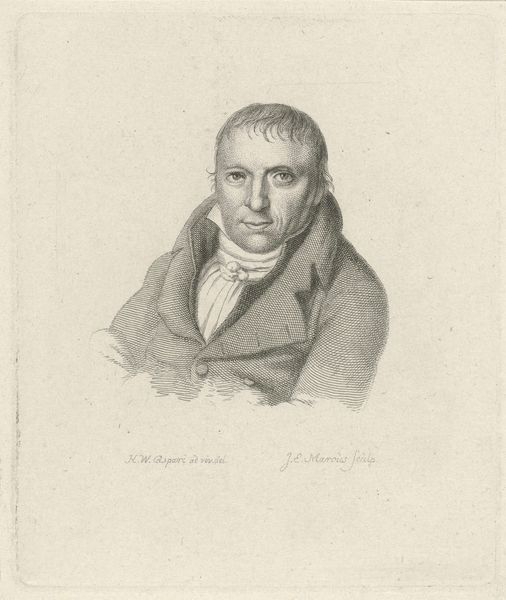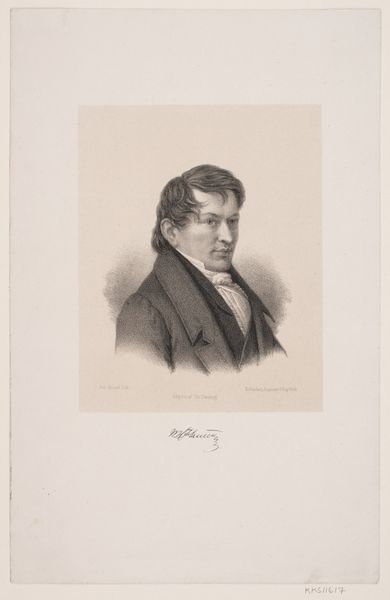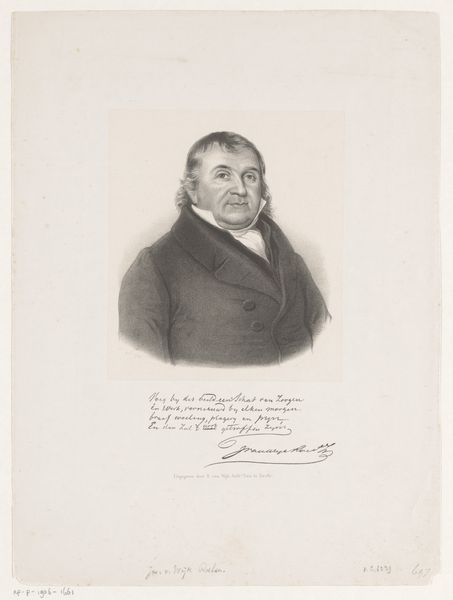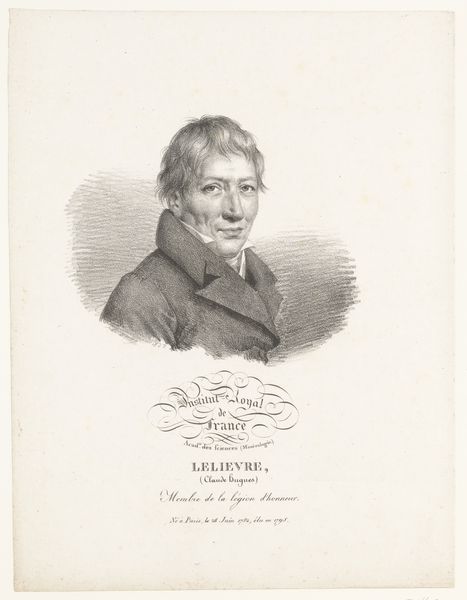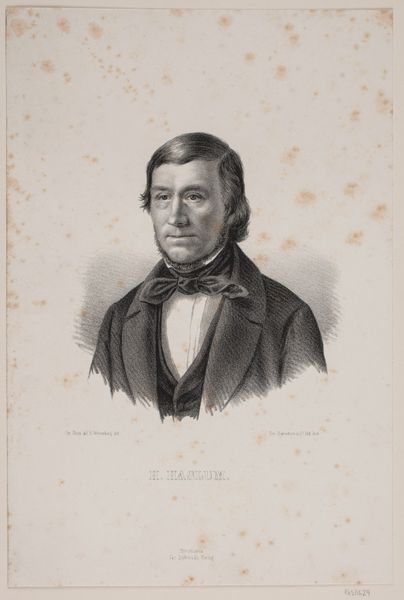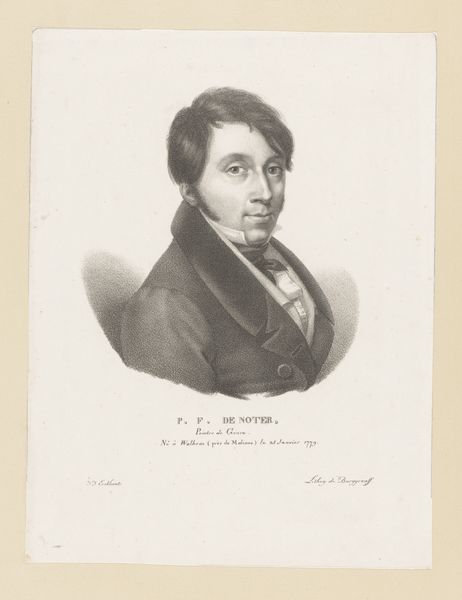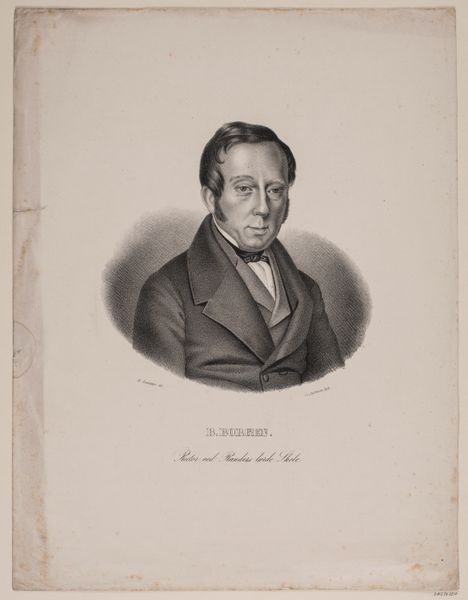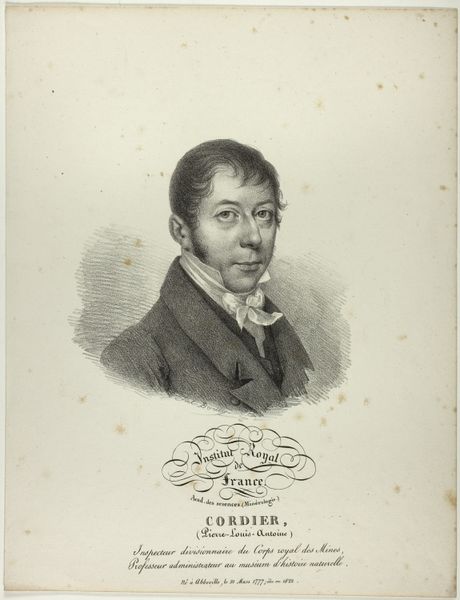
Portret van de advocaat en dichter François Guillaume Jean Stanislaus Andrieux 1835 - 1840
0:00
0:00
engraving
#
portrait
#
old engraving style
#
caricature
#
portrait reference
#
romanticism
#
portrait drawing
#
academic-art
#
engraving
Dimensions: height 489 mm, width 320 mm
Copyright: Rijks Museum: Open Domain
Editor: This is "Portret van de advocaat en dichter François Guillaume Jean Stanislaus Andrieux" by Zéphirin Belliard, made between 1835 and 1840. It's an engraving, and something about the starkness of it feels quite…serious. What do you see in this piece? Curator: This engraving, rendered in a style reminiscent of Romanticism and academic art, begs us to consider the power structures at play. We see Andrieux, a lawyer and poet, presented in a formal, almost idealized manner. Who is afforded the privilege of representation, and how are they being framed? The image carries weight beyond personal identity. Editor: Representation as privilege, that's interesting. What about the engraving medium itself? Curator: Exactly! Engraving was often used for mass distribution, which means this image of Andrieux could reach a broad audience. Consider who controlled these printing processes and whose stories were amplified through them. Is this an attempt to solidify his position within a particular social or intellectual hierarchy? The Romantic style further idealizes him, subtly reinforcing a certain standard of beauty and intellect. Editor: So it's not just *who* is depicted, but *how* and *why* that really matters. The distribution part adds another dimension too. I hadn't really considered that before. Curator: Precisely! It pushes us to question not just the subject, but also the entire ecosystem of image-making and distribution during that period. Whose perspectives are missing from this narrative? What alternative representations might have existed? And how does this contribute to the bigger discussion of that era? Editor: That’s a perspective shift for sure! Now, I’m seeing the piece much more as a political statement – subtle, but still there. Curator: Yes, this challenges the very notion of portraiture itself, inviting us to look beyond the surface and acknowledge power relations. Seeing art this way makes art matter.
Comments
No comments
Be the first to comment and join the conversation on the ultimate creative platform.
